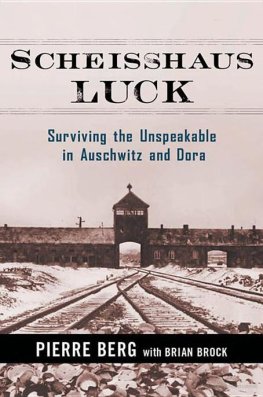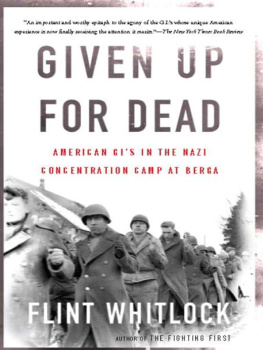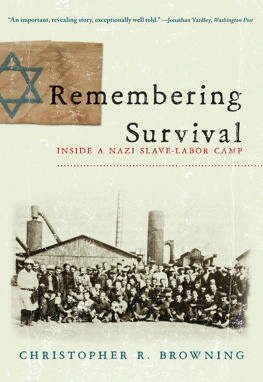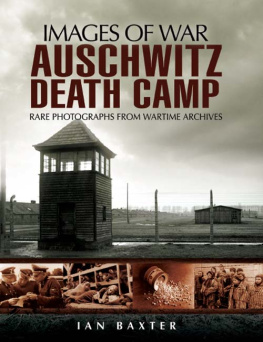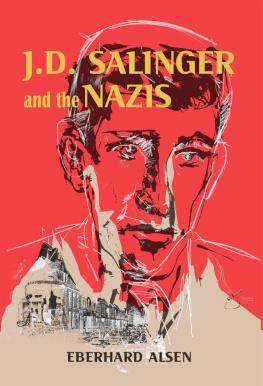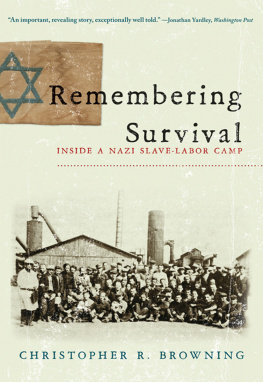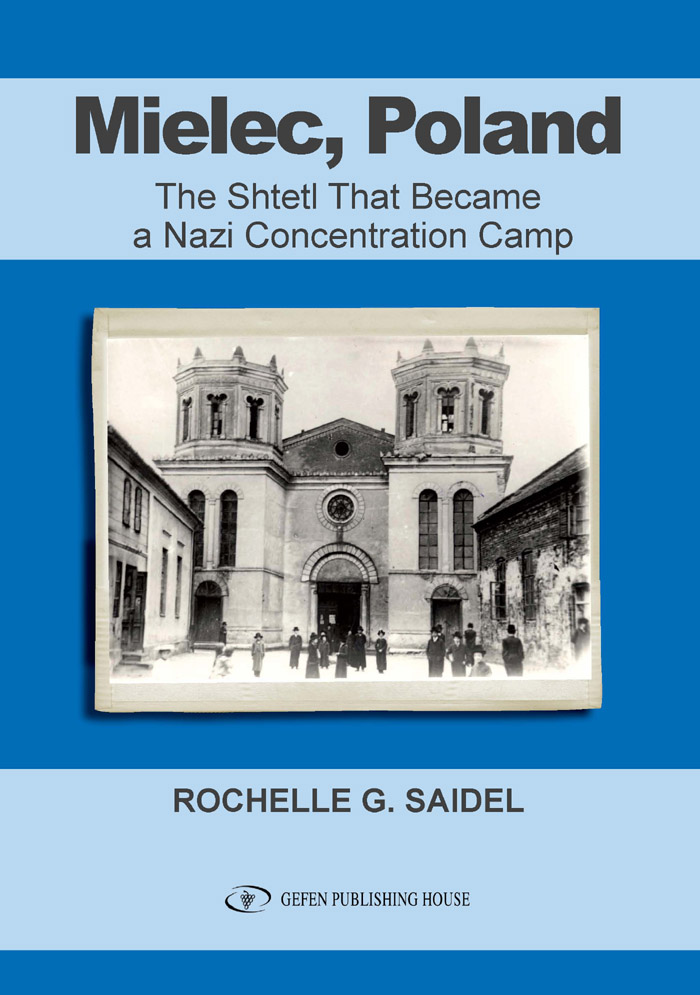Mielec, Poland
Mielec and Surroundings during World War II

Mielec, Poland
The Shtetl That Became a Nazi Concentration Camp
ROCHELLE G. SAIDEL

Copyright Rochelle G. Saidel
Jerusalem 2012/5772
All rights reserved. No part of this publication may be translated, reproduced, stored in a retrieval system or transmitted, in any form or by any means, electronic, mechanical, photocopying, recording or otherwise, without express written permission from the publishers.
Published in cooperation with Remember the Women Institute www.rememberwomen.org
Graphic Design: Michal Cohen
Typesetting: David Yehoshua
Front cover photo: Courtesy of Moshe Borger
Back cover authors photo: Jeff F. Segall
Back cover airplane photo: Bundesarchiv, Bild 146-1978-066-11A
ISBN: 978-965-229-529-3
1 3 5 7 9 8 6 4 2
Gefen Publishing House Ltd.
6 Hatzvi Street
Jerusalem 94386, Israel
972-2-538-0247
orders@gefenpublishing.com
Gefen Books
11 Edison Place
Springfield, NJ 07081, USA
1-800-477-5257
orders@gefenpublishing.com
www.gefenpublishing.com
Printed in Israel Send for our free catalogue
Library of Congress Cataloging-in-Publication Data
Saidel, Rochelle G.
Mielec, Poland : the shtetl that became a Nazi concentration camp / Rochelle G. Saidel.
p. cm.
Includes bibliographical references and index.
ISBN 978-965-229-529-3 (alk. paper)
1. JewsPersecutionsPolandMielec. 2. JewsPolandMielecHistory 20th century. 3. Holocaust, Jewish (19391945)PolandMielec. 4. Mielec (Poland)Ethnic relations. I. Title.
DS134.66.M54S35 2011
940.53'18543866dc23
2011038245
In memory of Sala and Feige Borger,
as well as all of the women, men, and children of Mielec
who perished during the Holocaust.
Contents
C HAPTER I
Mielec Today and Before World War II
P HOTO G ALLERY I
Pre-World War II Mielec
C HAPTER 2
The Mielec Jewish Community under Nazi Rule
C HAPTER 3
The Mielec Deportation Begins: March 9, 1942
P HOTO G ALLERY 2
Mielec from September 1939 to the March 9, 1942, Deportation
C HAPTER 4
Mielec Jews in the Lublin District
C HAPTER 5
The Many Who Were Murdered, the Few Who Escaped
C HAPTER 6
Missing the Roundup, Running, and Hiding
C HAPTER 7
The Mielec Slave Labor Camp
C HAPTER 8
The Mielec Concentration Camp
P HOTO G ALLERY 3
Exile in the Lublin District, Slave Labor in Mielec, and Mielec Today
C HAPTER 9
Post-World War II Nazi War Criminal Trials
A PPENDIX
Jewish Life in Mielec: Sixteenth through Nineteenth Centuries
Preface
Mielec, Poland, is just one of many small dots on the map of the Holocaust, but its remarkable and unique history calls for closer scrutiny. Using an experimental process that was not repeated, the Nazis destroyed the Mielec Jewish community on March 9, 1942.
After murdering those deemed too old or disabled to be useful, the German occupiers selected able-bodied survivors (mostly men) for slave labor and then deported the rest (mostly women, some with children) to another sector of the Generalgouvernement, the Lublin district. This process was recorded not only by the Nazis, but also by some members of the local Jewish and non-Jewish population. The resulting visual and written documentation allows us to learn about the Jewish community that had flourished in Mielec until the Holocaust, as well as the unusual way in which it was wiped out by the Nazis. In addition, there are testimonies and war criminal trial records that describe an almost unknown brutal slave labor camp that operated on the outskirts of Mielec from before March 1942 until July 1944.
Mielec (pronounced Mee-ELL-itz) is located in the Rzeszw province in southern Poland, quite close to Tarnw. Both the kehilla (community) and the Konzentrationslager (concentration camp) of Mielec have almost vanished from history, and evidence at the site is sparse. Nevertheless, what happened there can be recounted using old and new testimonies, rare photographs and documents, survivor interviews, and archival material. With the exception of a small number of people who were fortunate enough to survive by running and hiding, the entire population was murdered, sent to slave labor camps, or later deported to death camps from the Lublin district.
While the annihilation of Mielecs Jewish community might be considered one small episode in the greater history of the Holocaust, this case is exceptional. Mielec was the first town in the Generalgouvernement from which the entire Jewish population was deported in the context of Operation Reinhard and the Final Solution. (The Nazis created the Generalgouvernement, with its own administration, in the central third of Poland. It was originally divided into four districts: Krakw, Warszawa, Radom, and Lublin, with Mielec in the Krakw district.)
The Nazis well-documented decision to deport the Jews of Mielec was made very early, in January 1942. Furthermore, after deportation to the Lublin district following an Aktion on March 9, 1942, the Mielec Jews were not murdered immediately. They were allowed to live for months under terrible circumstances in some of the small towns in that district, near Sobibr and Beec. Ultimately these two death camps would be the final destination for Mielecs Jews.
Another unusual aspect of the Mielec story is the labor camp that was located there. The site of the Polish National Aircraft Company (PZL), part of a Centralny Okreg Przemysowy (Central Industrial District), was taken over by the Nazis for the manufacture of the Heinkel companys airplanes. Later this work camp became a concentration camp, complete with tattoos and sadistic commandants. Despite these facts, histories of the Holocaust rarely mention Mielec.
Soon after I learned about Mielec, I was surprised to discover that it had played an important role in my early Jewish education. Rabbi Paul Schuchalter, of blessed memory, my beloved childhood rabbi and Hebrew school teacher in Glens Falls, NY, was from Mielec. His father had been a shochet (ritual slaughterer) there, and the family came to the United States before World War II. Rabbi Schuchalter arrived in my hometown in 1948. As one of his duties as the rabbi of our small Conservative synagogue, he was required to follow his fathers trade and slaughter chickens in a shed behind his familys home. I have a flash of memory of him entering his house from the shed, blood on a white smock. But I do not remember him ever mentioning his youth in Mielec. In those years we focused on Americanization, rather than memories of Europe before World War II or the Holocaust.
I only heard about Mielec many years later, after my husband and I bought a home in Jerusalem in 1997. My father Joseph Saidel, of blessed memory, died that year, and I recited Kaddish for him in Moreshet Yisrael, a Conservative synagogue in Jerusalem. During that time, I met one of the regular daily minyan (prayer group) members, Moshe Borger, now age ninety-one. We became good friends, and when he learned that I did research and wrote about the Holocaust, he began telling me about his own background. Moshe is one of a small number of people from Mielecs Jewish community who survived the Holocaust. In one conversation, not knowing about my Glens Falls connection, he mentioned that the father-in-law of Rabbi Marc Angel of Shearith Israel, the Spanish and Portuguese Synagogue in New York, was from Mielec. Rabbi Paul Schuchalter? I asked Moshe. But he was my rabbi when I grew up in Glens Falls! I even babysat for his children, including Gilda Schuchalter Angel. Moshe Borger and Paul Schuchalter had been bench mates in


